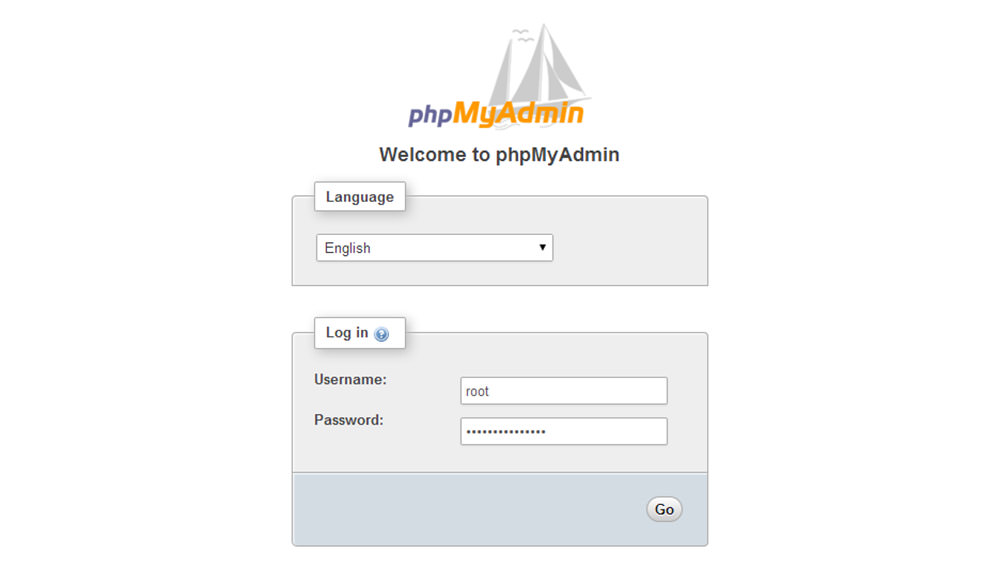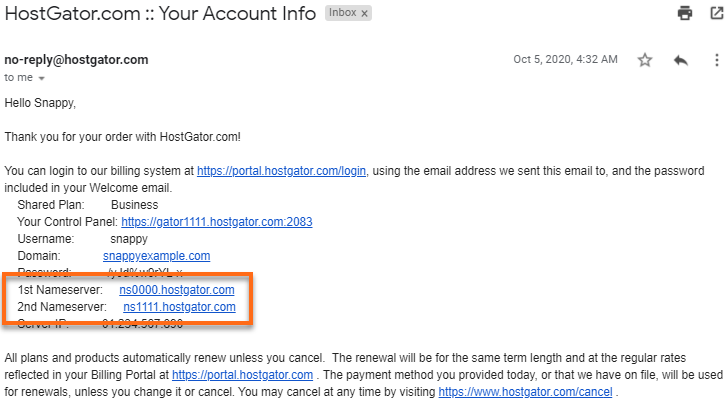
You can increase the performance of Apache's web server by changing its settings. Some of these settings include the MaxRequestWorkers directive, SymLinksIfOwnerMatch, and MinSpareServers. You can improve the website's speed by changing these settings.
KeepAlive directive
Apache's KeepAlive directive determines how many requests it will accept for each persistent connection. It should limit it to 100 requests per persistent connection, but can be increased to handle larger traffic volumes. KeepAlive also controls MaxKeepAliveRequests. This parameter limits the number per persistent connection. MaxKeepAliveRequests should be set higher to prevent overloading dedicated servers.
MaxRequestWorkers
Apache's MaxRequestWorkers directive limits the number of concurrent connections it can handle. This directive is used to prevent the Apache server from using all available resources. Too low a value may cause the server not to work properly and can result in data loss. Too high a value could lead to the servercrashing.

SymLinksIfOwnerMatch
Apache is vulnerable to malicious users changing symlinks repeatedly. This is called a race condition. If an attacker changes a symbollink multiple times, he can inject malicious code into the user's file. A workaround is to disable SymLinksIfOwnerMatched in Apache's config.
MinSpareServers
Apache can handle a lot of requests, so it is vital to tune it for a small number of child processes. You can set MinSpareServers or MaxSpareServers in your Apache conf file. Both configurations determine how many child processes will be started by the parent process during startup. These settings should be equal or close to MaxClients.
Expires
Expires headers help speed up the loading of web pages and prevent outdated content. These headers reduce the amount of HTTP requests to the server. This makes your site load faster and is especially helpful for complex web pages. The expires headers allow your browser's to automatically store some of the files found on a website instead of downloading them.
Etag
An ETag is a piece of code that uniquely identifies a page. It can contain a simple MD5 haveh or additional attributes. Apache generates ETags from the file's inode numbers, last modified dates, and file size. The ETags can be found in the response's header.

Headers for Cache-Control
Cache Control headers are HTTP Headers that set caching policies. They control how long a resource can be cached and where it should be stored. They can also be used to specify the expiration date. An Expire header defines a date that the resource should be removed from validity. Browsers will need to recache the resource. Most webmasters recommend cache-control headers because they allow advanced caching policies.
Memory usage-limiting modules
Apache provides memory usage-limiting module that allows you to limit the amount of memory a particular process can use. A number of factors can limit a process, such as its overall size, unshared and shared memory, and concurrent requests. These limitations may be applied to parent and child processes.
FAQ
How much does it cost for a website to be built?
This question will depend on your goals for your website. Google Sites may not be required if you simply want to provide information about yourself or your company.
However, if you want to attract visitors to your website, you'll likely want to pay for something more robust.
The most popular solution is to use a Content Management System (like WordPress). These programs enable you to create a website in no time. These sites are hosted by third-party companies so you don't have to worry about being hacked.
Squarespace is another way to create a website. There are a number of plans available, with prices ranging from $5 per Month to $100 Per Month depending on the features you wish to add to your website.
What is a UI designer?
The interface design team for software products is called a user interface (UI). They are responsible to design the layout and visual elements for an application. Graphic designers may also be part of the UI designer.
The UI designer should be able solve problems by understanding how people use computers.
A UI designer should have a passion for technology and software design. The field requires that the designer understands all aspects of it, from designing ideas to writing code.
They should be able to create designs using various tools and techniques. They must be able think creatively and find innovative solutions to problems.
They should be detail-oriented and well organized. They should be capable of quickly and efficiently developing prototypes.
They should feel at ease working with clients, large and small. They should be able to adapt to changing situations and environments.
They must be able communicate with others effectively. They should be capable of communicating clearly and concisely.
They must be well-rounded and have strong communication skills.
They should be motivated and driven.
They should be passionate about their craft.
Does A Good Portfolio Make Me More Likely To Be Hired As A Web Developer?
Yes. When you are applying for a job as a web developer or designer, a portfolio is crucial. The portfolio must show examples of your skills and experience.
A portfolio usually consists of samples of your past projects. You can include anything that demonstrates your skills. Your portfolio should include everything from mockups, wireframes, logos, brochures, websites, and even apps.
What is website design software?
Web design software is used to create web pages and other digital media by graphic artists, photographers and illustrators.
There are two types main website design software options: desktop apps and cloud-based. Desktop apps are downloaded to your computer locally and you will need additional software. Cloud-based software is hosted remotely over the internet. It does not require you to install additional software, which makes them great for mobile users.
Desktop Applications
Although desktop apps offer more features than cloud-based applications, they are not always required. Some people prefer to only use a desktop program because it is easier and more convenient. Others like to use the same tool regardless of whether they are working on a laptop or a smartphone.
Cloud-Based Solutions
Web designers who want to save time and money should choose a cloud-based solution. These services allow you to edit any type of document from anywhere that has an internet connection. This allows you to use your tablet while waiting for your coffee maker to brew.
If you decide to use a cloud service, you will still need a license. However, you won't need additional licenses when upgrading to a newer version.
These programs can be used to create web pages, if you have Photoshop, InDesign or Illustrator.
What is responsive web design?
Responsive web design (RWD), is a way to create websites that display responsively on all devices, including smartphones, tablets, desktop computers, laptops and tablets. This allows users the ability to view a website simultaneously on different devices and still have access to other features like navigation menus, buttons, and so forth. RWD's goal is to ensure that users view the exact same version of a website on every screen size.
A website that sells primarily through eCommerce would be an example of this. You want your customers to be able to purchase products from your store, even if they are viewing it on a phone.
Responsive websites will adjust their layout according to the device that is being used. A website that is viewed on your laptop will display the same way as a desktop website. It will look different if you view the page from your phone.
This means you can make a website that looks amazing on all types of devices.
What is a website static?
Static websites are those where all content is stored on a web server and can be accessed by users via their web browsers.
The term "static” refers the fact that there is no dynamic feature such as changing images or video, animations etc.
This site was initially designed for corporate intranets, but it has been adopted by individuals or small businesses who desire simple websites that don't require complex programming.
Static sites have become increasingly popular because they require less maintenance. They're easier to update and maintain when compared to a fully-featured website with many different components (such as blogs).
They also load more quickly than dynamic counterparts. They are ideal for mobile users and those with slow Internet connections.
Also, static websites are more secure that dynamic counterparts. A static website is impossible to hack. Hackers have only access to data stored in a database.
There are two main options for creating a static website.
-
Using a Content Management System (CMS)
-
How to create a static HTML website
It all depends on what you need. A CMS is the best choice for anyone who is new to building websites.
Why? Because it gives you complete control of your website. You don't need to hire someone else to help you set it up. Upload files to the website server.
You can still learn code and create static sites. However, you will need to put in some time to learn how to program.
Statistics
- It's estimated that chatbots could reduce this by 30%. Gone are the days when chatbots were mere gimmicks – now, they're becoming ever more essential to customer-facing services. (websitebuilderexpert.com)
- Is your web design optimized for mobile? Over 50% of internet users browse websites using a mobile device. (wix.com)
- Studies show that 77% of satisfied customers will recommend your business or service to a friend after having a positive experience. (wix.com)
- When choosing your website color scheme, a general rule is to limit yourself to three shades: one primary color (60% of the mix), one secondary color (30%), and one accent color (10%). (wix.com)
- The average website user will read about 20% of the text on any given page, so it's crucial to entice them with an appropriate vibe. (websitebuilderexpert.com)
External Links
How To
How do I get started in UI Design?
There are two routes to becoming a UI Designer:
-
You can get a degree from school in UI Design.
-
You can become a freelancer.
If you want to go through school, you'll need to attend college or university and complete four years of study. This covers art, business, psychology, and computer science.
You can also enroll in classes at state universities or community colleges. Some schools offer free programs; others charge tuition fees.
After graduating, you'll need to find employment. If you are going to be working for yourself, you will need to build your client list. It's important to network with other professionals, so they know you exist.
You can also look for opportunities to intern at companies that specialize in developing web applications. Many companies hire interns to gain work experience before hiring full-time workers.
Your portfolio will help to get you more work. Your portfolio should contain your work samples and details of the projects you worked on.
It is a good idea for potential employers to receive your portfolio via email.
Freelancers need to promote themselves. Advertise your services on job boards such as Indeed, Guru, Guru, and Upwork.
Freelancers frequently receive assignments from recruiters who post jobs online. These recruiters are looking for qualified candidates to fill certain positions in specific industries.
These recruiters often provide a briefing detailing the job requirements to the candidate.
While freelancers aren't required to sign contracts for a long time, they can still be paid. It is best to negotiate an upfront fee if you intend to move forward.
Many designers prefer to work directly with clients rather than through agencies. Although this may sound great, many lack the necessary skills.
Agency workers have a deep understanding of the industry in which they are working. They have access to resources and training that enable them to produce high quality work.
These benefits are not the only ones. Agency workers typically receive a higher hourly wage.
The downside to working with an agency is that you won't have direct contact with the employer.
To succeed as a UI designer, you must be self-motivated, creative, organized, flexible, detail-oriented, analytical, and communicative.
You must also possess excellent verbal and written communication skills.
UI designers are responsible to design websites using user interfaces (UI) as well as visual elements.
They are also responsible in ensuring that the site meets all users' requirements.
This includes understanding the information that visitors require and how the site should function.
Wireframes can be created by UI designers with a variety tools. They use wireframing to help them visualize the layout of a webpage before they start designing.
You can find wireframe templates online. This makes it easy to make your own wireframes.
Some designers only focus on UI design. Others combine UI and graphic design.
Graphic designers use software such as Photoshop to edit images.
Adobe InDesign is then used to layout pages and layouts.
Photographers capture images using digital cameras or DSLRs.
The photos are then uploaded to a photo editing software where text captions, filters and other effects can be added.
Afterward, the photographer saves the image in a file format compatible with the website.
It is vital to consider all aspects in the web design process.
This includes research planning, wireframing and prototyping, as well as testing, coding, content generation, and publishing.
Research - It's essential to conduct thorough research before starting a new project.
Planning – After you've done your research you'll be ready to develop a plan.
Wireframing- A wireframe - A wireframe represents a sketch of an application or web page.
Prototyping-Prototypes ensure that the final product matches your initial vision.
Testing - Multiple rounds of testing should be done on the prototype to make sure it works properly.
Coding - The process of writing computer software code is called Coding.
Content Creation - This includes everything from managing social media accounts to writing copy.
Publishing means uploading files onto a server and making the site accessible.
You will learn about various projects as a freelance UX/UI designer.
For example, some companies only require wire frames, whereas others require full prototypes.
Depending on which type of project you accept you might be asked to do specific tasks.
One example is that if you are hired as a wireframe designer, you might be required to create many wireframes.
If you're hired to create a complete prototype, you may be required to develop a fully functional version of the site.
Strong interpersonal skills are important regardless of the project type.
Referrals are what most clients use to hire freelancers. Therefore, it is important that you establish strong relationships with potential employers.
Additionally, communication skills are essential.
A portfolio is an important part of any freelancer's arsenal.
It is a showcase of your work and a demonstration of your ability produce high-quality outputs.
You can do it online with a professional portfolio.
You can find similar websites to yours online to help you get started.
Next, search these sites to discover which site offers what services.
Once you've identified the best practices, it is time to start implementing them.
You can also include links to your portfolio in your resume.